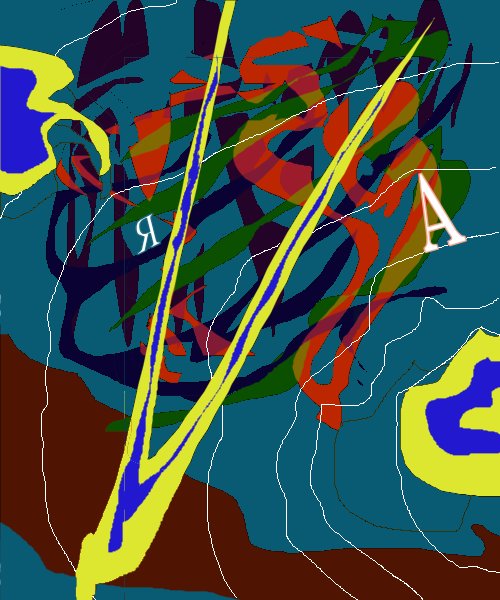
Bob Grumman
“Eidographic Study”
with an afterword by Gregory Vincent St. Thomasino

afterword
What is an "eidographic study"? What is an "eidograph"? We know what a "study" is. A "study" is designed to improve technique, as in an instructive exercise, the sort of exercise a musician might play, as in the case of the étude; while for the artist a "study" is, while not to be confused with a "sketch" which is more likely a rough draft, say, or preliminary suggestion to be worked up and finished, for the artist a "study" is made for the purpose of study and may be a highly wrought composition, and here one is likely to think of the notebooks of Leonardo da Vinci and of his many well-known "studies" of anatomy and of nature and of "details" that show up in later, finished works; and the poet, too, has his "studies," and these are numerous, too numerous to list them all but we can say that as a craftsman the poet may write or practice "studies" in, say, diction (the exactitude of diction as contrasted with the exactitude of thought), alliteration and assonance and rhyme, in metre and metrical forms, his "study" may be in the sonnet form, say, by writing sonnets in the ideal thought-form of, or after, Shakespeare or Drayton; all told, the "study" is an instructive exercise, an investigation, a process of application in order to acquire knowledge or expertise. And some "studies" may stand on their own as works, not only for the purpose of developing technical efficiency, but as works of high aesthetic value, as works of beauty.St. Thomasino
What, then, is an "eidographic study"? What is an "eidograph"? An "eidograph" is a depiction or rendering (both in the sense of the presentation of an idea, and in that it may be but a version or translation or postulation) of an "eidos," and either of an "eidos" or of some part or aspect thereto. And what, then, is an "eidos"? An "eidos" is not a material thing; an "eidos" is a mental, and therefore transcendental, unit, or, more precisely, measure, of thought (or of "feeling"). We cannot speak of what an "eidos" does consist or inhere in, but that thought—whether "verbal" or "visual" or "affective"—does consist or inhere in eidetic form. "Eidetic" form is abstract form, it is, for instance, not the form of this chair, but the form of a chair, and what's more it is the form both of chair in the abstract and of this particular chair. But we can postulate the "eidos" as being separate from the particular "eidetic form," and though while out of scientific range assume that it can be intuited (that is, known or learned) by poetic and artistic means or agencies. If we can postulate of the eidos a separate being, what can we say about this separateness? This is the area where the structure of thought is mapped out (for us); this is "logical space." And what, then, does one see when looking at an eidograph? The eidos of logical space.St. Thomasino
—Gregory Vincent St. Thomasino